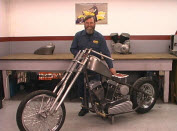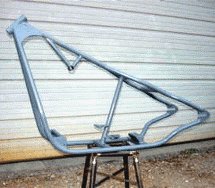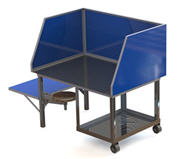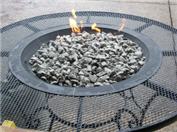Tig Welding Instructions:
TIG welding instructions: TIG welding can be a very useful skill to acquire for anyone who works metal because it's very versatile welding process. Once you 'get it', you'll never want to weld any other way.
Part 1: TIG welding, (which stands for Tungsten Inert Gas, by the way) is an extremely useful type of welding for the control and precision it gives you over your welds. You can get some of the cleanest welds possible when you are TIG welding. Another advantage it offers is that more metals can be welded through TIG welding than any other welding process. Let's take a look at TIG welding techniques.
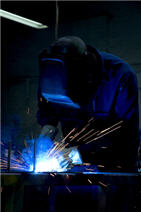
Essentially, what happens while TIG welding
is that a tungsten electrode heats the metal and an inert gas, (argon)
protects the weld puddle from getting containment's into it. This is why
TIG welding can give such precise and clean welds. The control also
comes from the fact that the heat being applied is controlled by a foot
pedal giving you extremely precise control over everything that's
happening.
Part 2: The basic
instructions for TIG welding begin with establishing an arc. From there
you need to create your puddle, into which you can add your filler and
guide the puddle along the joint you are welding. Once you have
completed that you can end the arc, but you must keep your torch on top
of the weld to keep it from becoming contaminated.
A very
important instruction to remember while TIG welding is to always ensure
that the metal has been cleaned thoroughly before beginning any welding.
Failure to do so will result in contaminated welds. Another thing you
don't want in order to keep your welds clean is to allow any kind of a
draft through your shop. This can disrupt the shielding and result in a
spotty weld.
Part 3: As far as
sizes of materials go, you should use the smallest piece of tungsten
available as it will give you an arc that is easier to start and
control. By opposition, you should use the largest filler material
possible, because again, it is easier to control the flow as you add it
to your puddle. You also don't want to come in at the same angle with
your filler as with your arc, come from a lower angle and it will help
you keep things even.
These are only the bare essentials of TIG
welding techniques, but they should be enough to get someone with the
proper experience with working metals and welding going with a new
technique. As with any welding, it is very important to wear proper
safety equipment while TIG welding. This includes gloves, mask, apron,
and also a respirator should be worn while TIG welding.
For more
tig welding instructions and techniques try our free mini course. We also
recommend this Tig Welding Basics DVD by Ron Covell for tig
welding. His basic and advanced dvd's on are for all welding levels. They are a must have for
your welding library.
Welding Plans:
New! Welding Table
New! Log Splitter
Top Projects:


